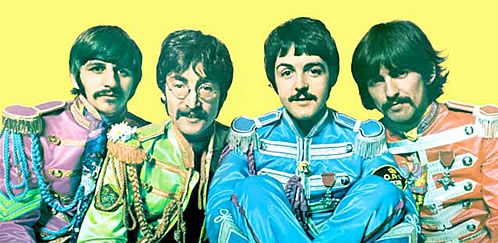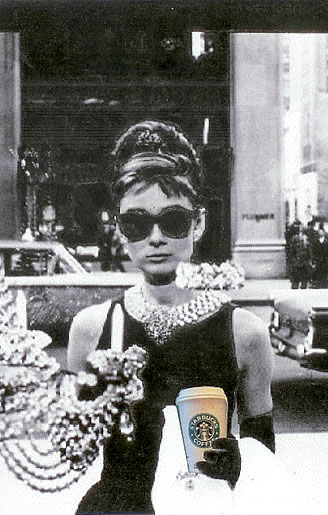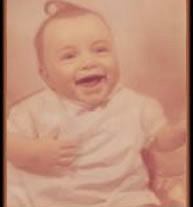June 2007
It was FORTY years ago today,
Sgt. Pepper taught the band to play
We studied the album cover as the joint went around the room. A small apartment in Queens where, while one of our group was getting lucky behind a closed door, the rest of us were trying to identify the faces on the front and singing along to lyrics—provided for the first time ever—on the back:
Lenny Bruce! Sigmund Freud! Marlene Dietrich! Edgar Allen Poe!
“Picture yourself in a boat on a river
With tangerine trees and marmalade skies”
W.C. Fields! Marlon Brando! Oscar Wilde! Laurel and Hardy!
“I’m fixing a hole where the rain gets in
And stops my mind from wandering”
Bob Dylan! Dylan Thomas! Karl Marx! Marilyn Monroe!
“I’d love to turn you on …..
Was a piano chord ever held longer?
Were lyrics ever more tantalizing? More entrancing?
Was this fantastical use of “high” tech sound mixing and double tracking ever heard before? Other than, say on… Mars?
And what’s with these pseudonyms? Sgt. Pepper? Mr. Kite? Billy Shears?
And can you “dig” the day-glo military costumes? With stripes and patches and badges —oh, my! And the Fab Four mustachioed in a stunning centerfold portraiture?

So to say it
was an immediate hit upon release (June 1st in
the U.K…June 2nd here), is to understate
its impact by at least two-and-a-half. Sgt. Pepper
captured the zeitgeist of the times. Which we see
as something along the lines of:
youthful counter-culture sensibilities,
funneled through
the new artistic expression of psychedelia.
Rolling Stone magazine, has long since called it “The best album ever made.”
However one may define it, or whatever one might feel about that era— especially in a right view mirror of forty years passing— it was a time the likes of which we will never see again. And in retrospect, the strongest drug taken, might have been that of wishful thinking.
Hyperbole? To coin a phrase: “You had to be there.” Though it has also been said that: “If you remember the 60’s…you weren’t there.” Well, we were there and we remember. In part we suppose, because, to quote Clinton, we never inhaled. (Or perhaps on second thought, maybe just a tad).
An interesting footnote for us, is that Paul McCartney’s latest CD (album?) Memory Almost Full, is being released this month via that retail chain of infinite countertops and “caffeinelia”—Starbucks. Insert irony here: ___________________________________.
* * *
Still Another Walking Poem
Scenes from the Backlot of Paramount at Dusk
1.
A skyline consumed in devilish flame?
Or painted backdrops; facades at play.
They make magic here. The moguls bray
at the ghost of Rudolph Valentino.
2.
I’ve left the top-gun client behind—
the day rushing by in boxcar numbers
budgets and bottom lines.
Adventures in
the advertising game.
A board game played minus
the board.
3.
Wending my way down mythical streets
with Mom 'n
Pop storefronts
faux stoops and signs—
a slight bias noted in the barber pole—
I stop to tie my shoe atop
a prop
of a fire hydrant.
This is
The Naked City, of LaGuardia days;
boloney on Silvercup
with Hellman’s mayonnaise
can the end of the war be far behind?
The one that is winnable
without costing us our mind?
4.
Passing the corn rows
of khaki bungalows
blinking with
light bulbs
of infant ideas—
the next blockbuster being born
back there?
5.
Another stop this time
to partake of the air.
The air on this evening
so balmy that palm trees
stand as if caught
in the headlights.
Not
a single frond quivers;
a freeze frame from
the silver screen.
6.
The King Kong gate looms large up ahead
to separate the make-believe
from heavy traffic.
Its guardian, no St. Peter he,
is a man too young
too oblivious to
the abduction by natives of a screaming Fay Wray.
All is quiet on his western front.
7.
The shuffling and scuffling
of shoes from a sideral path;
footfalls intent on closing the gap
and gaining ground.
I turn around.
Just as suddenly I’m wearing (let the screen go dreamy
to a muted horn full of blues)…
8.
…a Dobb’s fedora.
I’m working the wide brim
redefining the crease
then straightening my tie;
a bold pattern in
Trylons and Perispheres.
I light up a Lucky. Then rush to my car
with Veronica Lake in tow
and speed away in the nick of time
on a rush of nicotine
an inch just after the closing gate.
In hot pursuit is some two-bit gumshoe
who’s been tailing me
all of
my adult life.
—Ron Vazzano.
* * *
Shakespeare Murders The Sopranos In Body Count
Approaching closure (on June 10th) after eight and a half years on the air (it only seems longer what with all those extended hiatuses…hiatii?), The Sopranos has left a lot of bodies in its wake. And while we don’t know where all the bodies are buried, so to speak— having been a sporadic viewer over this time— we feel certain that this blood bath cannot match what which, The Bard has wrought via his ten classified tragedies.
Despite the poetry and the gilt-edged turns of phrase that have come from the mouths of Shakespearean characters— unlike for example, the &$#!@**^!>%@#$ we are likely to hear from the likes of a Paulie Walnuts—nobody could handle a shiv better than Billy “Shakes.”
Mere supposition? Not entirely.
Let’s have a quick look at some numbers. By our count, the ten Shakespearean tragedies produced a total of 63 identifiable character deaths resulting from murder and suicide or the grief resulting from being exposed to such foul deeds. That’s 6.3 deaths per play, or “episode.” Here’s the a box score:

* Does not include for example, the 70 or 100 Senators said to be murdered in Julius Caeser
While we have
never made a similar analysis of the 86 episodes of The
Sopranos, (even our obsessive-compulsions have limits)
we doubt it approaches the above level of frequency, on a
per episode basis.
After all, there were those storylines, such as when Tony took Meadow on a college tour, in which he only had time to garrote one man in that particular episode. People get busy.
And what of the violence that stops short of death? The Bard was no lightweight on that score either. He too could torture with the best of them: gouging out of eyeballs (King Lear), severing tongue and limbs (Titus Andronicus), throwing scalding water in the face (Timon of Athens).
The takeaway
we guess is that violence, as in all things, is invariably
assessed in some sort of unwritten but well agreed upon context.
When embedded in storylines of modern times about streetwise characters and shown on TV…violence is appalling. When occurring in ancient tales, played out on the stage and spoken in the King’s English—violence… is classic.
* * *
What’s Wrong With This Picture?

It is the visual equivalent of mixed metaphors. Might we suggest incongruous icons?
This is a frame from the opening scene of Breakfast At Tiffany’s as the credits appear and the melancholy strains of Moon River are first heard. We see this elegant sliver of a woman at early morning hour, dressed in formal evening wear, eyes hidden behind oversized shades, nibbling on a piece of pastry held in a small paper bag and sipping coffee from a cardboard cup.
There is no recycled corrugated cardboard sleeve about the cup, to protect her from the proximity to scalding hot coffee. But that’s not the problem. Who needs it when you are wearing elbow length gloves? No the problem of course, is that the movie was released in 1961 and the first Starbucks store did not appear on the scene until 1971 in Seattle.
But we just couldn’t resist putting that cup in Audrey Hepburn’s delicate hand. To us it says something about the play of time; the mixing of tenses; the juxtapositions possible born of new technologies; and that everything—animate and inanimate— has a season.
To us, that’s
“heavy.” To others, that might all be obvious
and as light as a decaf, non-fat, sugar free Latte with extra
foam. Either way… good movie.
* * *
An Unusual (And Clean) Word from a Once Banned Book
“Oomaharuooma” — an exclamation of extreme emotion or a spiritual aid. Used in Henry Miller’s Tropic of Cancer.
The meaning of many other words in that book are, of course, more familiar to us. But the sense of decorum we try to maintain in this venue, prevents us from listing them.
First published in 1934, it took 27 years, or 1961, before this book was “unbanned” in the United States. And another 46 years until we recently got around to seeing what all the fuss was about.
Yes, the language is harsh. But no harsher than that which you would hear today on (and here we go again with that ever present frame of reference) The Sopranos. In most literary circles, the book is now considered a classic. How the bleep, do you like that?
* * *
fini
|














